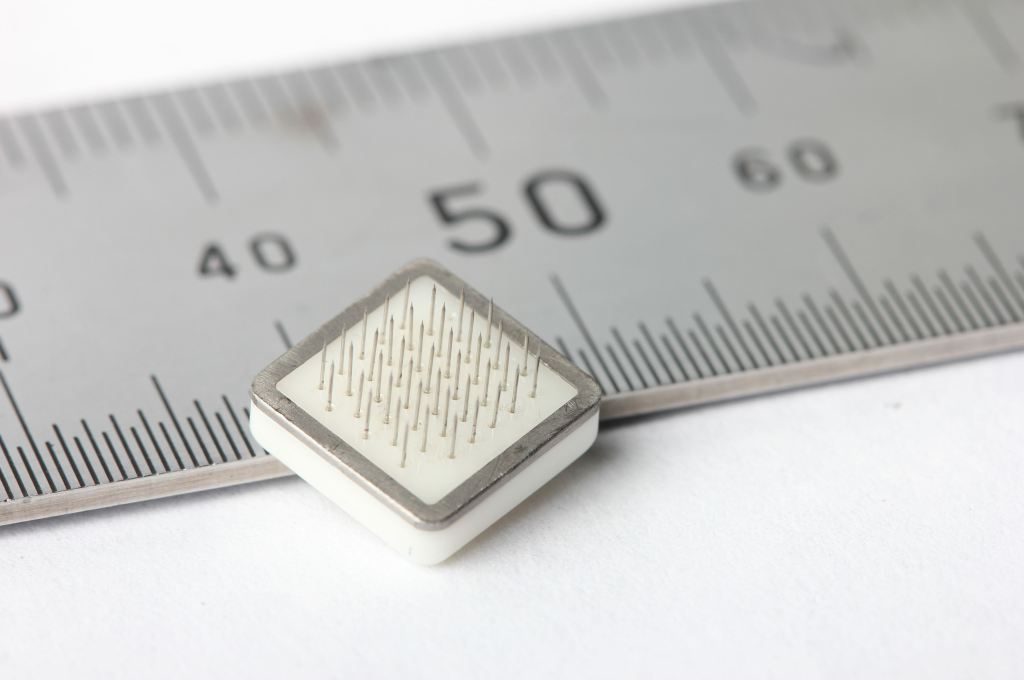The system taps into the brain’s visual cortex from behind, without using the eyes at all.
This year in Australia, researchers will implant a world-first bionic eye that can restore sight to the blind—no eyeball necessary.
While bionic eyes might sound futuristic, there are already a few retinal implants on the market.
U.S.-based Second Sight, the FDA-approved industry leader, has put at least 150 of their $145,000 systems in retinas around the world.
But what electrical engineer Arthur Lowery and his team plan to do in 2016 is different. Because even if a patient’s eyeball is damaged or they’re completely eyeless, his new glasses could help them see. Not a picture-perfect view of the world, but instead, the image will be more like a couple hundred dots configured to help guide a patient’s way.
The system, developed in Australia at Monash University, inputs data directly from a glasses-mounted camera into the brain. And Lowery thinks it could help more than 80% of clinically blind people see their way around better.
That’s because the system is based on a front-mounted cell-phone sized camera that’s hooked up to the brain’s vision system not through the eyes, but at the back of the head, in a one-inch area just above where the neck ends. It’s here where the brain processes vision. Hook up a few electrode push pins into the grey matter under the skin, and it’s thought that the pulses could create ‘dotty’ images seen by the brain.

“We think it’s going to be initially perceived as dots of various sizes in the distance,” Lowery says. The dots could then be programmed, not just to see images, but also to help: Lighting up the clearest pathways out of a room, recognizing household objects, or even turning a room full of blurry colleagues dotted at a conference table into a cast of distinct computer-programmed emojis, so the patient can sort out who’s who. “It’s just the beginning, really, of a deeper understanding of learning how to work with human perception,” Lowery says.
He developed the system with an Australian army surgeon who’d seen a lot of traumatic eye damage and wanted a fix. But they aren’t the only researchers who’ve hacked into the brain’s vision system from behind.
A scientist named Giles Brindley did it first while working at Cambridge in the 1960s. In those days, “you needed a bookcase full of equipment to have the electronics with the transmitters,” Lowery says, and the tech wasn’t practical for everyday use. Then in the 1970s American William Dobelle headed to Portugal to test out his own vision system for the blind, adding in an actual camera. But still, the technology wasn’t quite there: Wires connected to the back of the head had to be fed through the skin, a sometimes leaky system.
Today Lowery and his group can use pea-sized smartphone cameras and tiny computer processing technology, the same that’s in tablets and mobile phones. The team has spent roughly $20 million researching the tech, and is manufacturing batches of the devices now.
They will need to get the device approved for Australian hospital trials from a research ethics committee before they can tap into their first patient. But in late 2016, they hope to be able to open up a patient’s cranium and slip in about four of those teeny electrode tiles. As they push them into the cellophane-like covering of the brain, connecting the tech up to human grey matter, they’ll be slowly learning how to bring up the lights for someone who’s lost their sight.
Source of information from: Fortune
